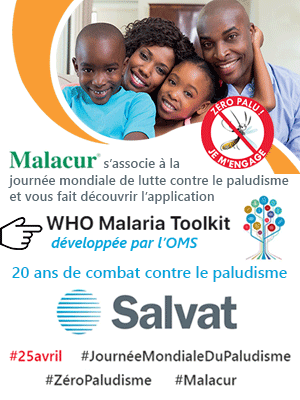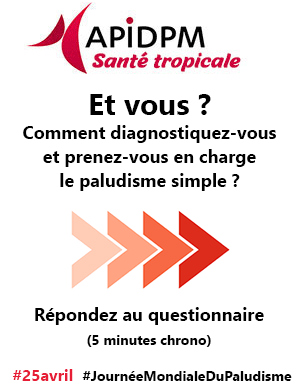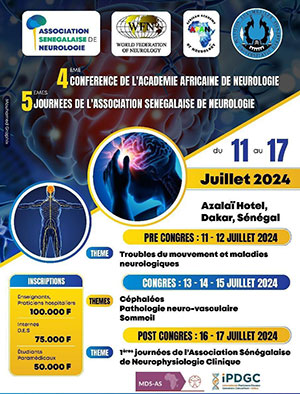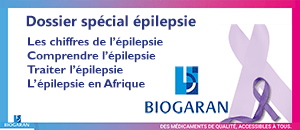← retour Santé tropicale
Accès aux sites pays ![]()
![]() BENIN
BENIN![]() BURKINA FASO
BURKINA FASO![]() CAMEROUN
CAMEROUN![]() CENTRAFRIQUE
CENTRAFRIQUE![]() CONGO
CONGO![]() COTE D'IVOIRE
COTE D'IVOIRE![]() GABON
GABON
![]() GUINEE
GUINEE![]() MADAGASCAR
MADAGASCAR![]() MALI
MALI![]() R.D. CONGO
R.D. CONGO![]() SENEGAL
SENEGAL![]() TOGO
TOGO
← retour Santé tropicale
Accès aux sites pays ![]()
![]() BENIN
BENIN![]() BURKINA FASO
BURKINA FASO![]() CAMEROUN
CAMEROUN![]() CENTRAFRIQUE
CENTRAFRIQUE![]() CONGO
CONGO![]() COTE D'IVOIRE
COTE D'IVOIRE![]() GABON
GABON
![]() GUINEE
GUINEE![]() MADAGASCAR
MADAGASCAR![]() MALI
MALI![]() R.D. CONGO
R.D. CONGO![]() SENEGAL
SENEGAL![]() TOGO
TOGO

Publié dans Médecine d'Afrique Noire 6205 - Mai 2015 - pages 247-256
 Aspects épidémiologiques, radiologiques et électriques de la cardiomyopathie dilatée à l’hôpital général de Loandjili de Pointe-Noire (Congo Brazzaville). A propos de 82 cas
Aspects épidémiologiques, radiologiques et électriques de la cardiomyopathie dilatée à l’hôpital général de Loandjili de Pointe-Noire (Congo Brazzaville). A propos de 82 casAuteurs : A.M. Bani, M.S. Ikama, D. Moukassa, F. Ntsiba, C. Loemba Mavoungou, B. Ellenga Mbolla, I. Ondze Kafata, A.E. Ibatetou, C. Oko-Lossambo, Th. Gombet, G. Kimbally Kaky - Congo-Brazzaville
La cardiomyopathie dilatée est une affection cardiaque qui affecte les ventricules et oreillettes. L’échocardiographie représente l’examen-clé du diagnostic.
Objectif : Déterminer les caractéristiques électrocardiographiques de la cardiomyopathie dilatée dans notre contexte de travail.
Patients et méthode : Nous avons entrepris une étude rétrospective, transversale et descriptive dans le service de cardiologie et médecine interne de l’hôpital général de Loandjili à Pointe-Noire entre avril 2008 et octobre 2013, soit 60 mois. Les patients en insuffisance cardiaque globale et congestive ou en insuffisance cardiaque gauche en rapport avec une cardiomyopathie dilatée ont été inclus dans l’étude.
Résultats : Quatre-vingt-deux patients étaient retenus pour l’étude. La fréquence relative était de 3,9%. L’âge moyen était de 55,07 ± 15,08 ans. 52 hommes (63%) et 30 femmes (37%) étaient inclus. Soixante-six patients (80%) étaient en insuffisance cardiaque globale et congestive. Le rapport cardio-thoracique moyen était de 63,17 ± 6,1%. Trente-neuf patients étaient en forme électrique A ; 17 patients en C ; 12 patients en D ; 8 patients en E ; 2 patients en G et 1 patient en F. Le diamètre télédiastolique du ventricule gauche moyen était de 64,34 ± 7,5mm et la surface de l’oreillette gauche moyenne était de 23,81 ± 4,03 cm². Quarante-quatre patients (53,66%) avaient une fraction d’éjection modestement altérée ; 18 patients (21,95%) avaient une altération minime de la fraction d’éjection, et 20 patients (24,39%) avaient une altération sévère de la fraction d’éjection. Les corrélations étaient significatives entre l’aspect radiologique et le diamètre télé systolique du VG (p : 0,0089 ; r : 0,28) d’une part, puis entre la forme A, la forme C et le diamètre télésystolique du VG (p : 0,0378) d’autre part.
Conclusion : La cardiomyopathie dilatée est caractérisée par une défaillance, une dilatation ventriculaire et/ou auriculaire. L’insuffisance cardiaque est fréquente, la cardiomégalie est constante mais non-spécifique et l’échocardiographie référentielle. Certaines formes électriques, associée à la clinique et à la radiologie, sont corrélées à cette cardiopathie, et permettent son diagnostic.
Dilated cardiomyopathy affects the heart's ventricles and atria. The echography represents the key exam of its diagnostic.
Objective: To determine the electrocardiographic characteristics of the dilated cardiomyopathy in our work content.
Patients and methods: We have conducted a retrospective, transversal and descriptive study in the cardiology service at the General Hospital of Loandjili in Pointe-Noire from April 2008 to October 2013, an equivalent of 60 months.
Results: Eighty-two patients were included in the study. The prevalence of the dilated cardiomyopathy was about 3,9%. The average age was about 55,07 ± 15,08 years old. The study included 52 men (63%) and 30 women (37%). Sixty-six patients (80%) were in a congestive heart failure. The mean cardio-thoracic report was about 63, 17 ± 6,1%. Thirty-nine patients were in an electrocardiography Form A; 17 patients were in ECG form C; 12 patients were in ECG form D; 8 patients in ECG form E; 3 patients were in ECG form B; 2 patients were in ECG form G and 1 patients was in ECG form F. The left ventricle telediastolic mean diameter (LVTMD) was 64,34 ± 7,5mm and the mean area of left auricle (LA) was about 23,81 ± 4,03 cm². 53,66% of the total population was in a moderate ejection fraction; 21,95% of the total population was in a low ejection fraction and 24,39% of the total population was in a severe ejection fraction. On one hand, the correlation was significantly related between the radiologic aspects and the LVTMD (P: 0.0089; r = 0.28); On the other hand the correlation was also significantly related between LVTMD and the forms ECG A & B (P: 0.00378).
Conclusion: Dilated cardiomyopathy (DCM) is characterized by a heart failure, a ventricular and/or auricular dilatation. Heart failure is frequent, cardiomegaly is constant but nonspecific, and echocardiography is the reference. Some other ECG, associated with the clinic and radiology, are correlated with this heart disease and allow its diagnosis.
Cet article est actuellement coté ![]() (3,4 étoiles) par les abonnés de Médecine d'Afrique Noire.
(3,4 étoiles) par les abonnés de Médecine d'Afrique Noire.
Il a été consulté 2741 fois, téléchargé 53 fois et évalué 11 fois.
1 commentaire a été posté à propos de cet article
Restez informés : recevez, chaque mercredi, la lettre d'informations de Santé tropicale. Inscriptions
Ce contenu gratuit vous est destiné :







![]() Adresse
Adresse
![]() Téléphone
Téléphone
![]() Contactez-nous
Contactez-nous
Actualités
Articles médicaux